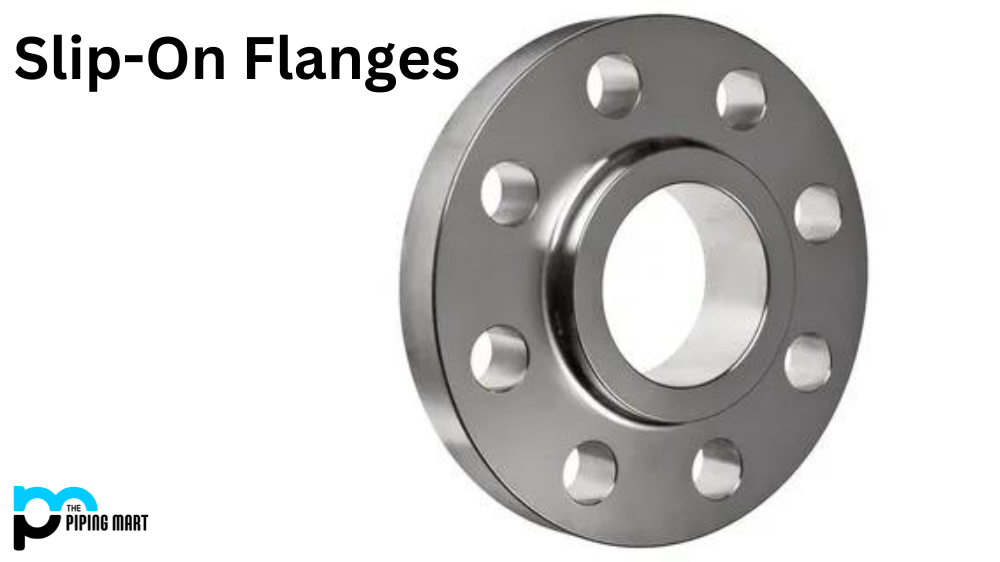Flanges are crucial components in piping systems that ensure the seamless flow of fluids, gases, and other materials. They serve as connectors between various sections of pipes and valves and enable easy dismantling and replacement of system components. However, flanges cannot work alone; they require other parts like gaskets, bolts, and nuts to function correctly. This blog post discusses different types of flange joints used in industrial settings, their applications, and their advantages.
What is Flange Joints?
Flange joints are connections to join pipes, valves, pumps, and other equipment in piping systems. They consist of two flanges with a gasket in between, secured by bolts and nuts. Flanges come in various shapes and sizes to accommodate pressure and temperature requirements. They provide a reliable and leak-proof method of connecting piping components in industrial applications.
Types of Flange Joints
Weld Neck Flanges
Weld neck flanges are the most common flange joints used in industrial piping systems. They have a long tapered hub that can be welded to a pipe and a flared fitting on the outer perimeter, which provides reinforcement and support. Weld neck flanges are highly resistant to distortion and thermal expansion, making them ideal for high-pressure or high-temperature applications in the oil and gas, petrochemical, and chemical industries.
Slip-On Flanges
Slip-on flanges are relatively easier and cheaper to install than weld neck flanges. They have a flat face and a thin outer rim that slides over the pipe end. Slip-on flanges are secured to the pipe by fillet welding on both sides, ensuring a tight seal between the flange and pipe. These flanges are commonly used in low-pressure applications requiring frequent dismantlings, such as water supply or HVAC systems.
Blind Flanges
A blind flange is a solid disk without a centre hole used to seal off the end of a piping system. Blind flanges are typically threaded or bolted onto the end of a pipe, and their main purpose is to stop the flow of fluids or gases in the system. Blind flanges are often used in applications requiring inspection, cleaning, or pipeline maintenance for safety and security reasons.
Socket Weld Flanges
A socket weld flange is similar to a slip-on flange but has a socket fit that is welded to the pipe. Socket weld flanges are ideal for systems with small pipe sizes, where high accuracy and alignment are necessary for the smooth flow of fluids and gases. These flanges are commonly used in petrochemical, refinery, and power generation industries.
Threaded Flanges
Threaded flanges are similar to slip-on flanges in appearance, but they have internal threads that screw onto the end of a pipe. Threaded flanges are used in low-pressure systems where welding is impossible or allowed. These flanges are commonly used in plumbing and fire protection systems requiring regular maintenance.
Types of Flanges in Piping
- Weld Neck Flange: This type of flange is designed to be butt-welded to the pipe. It has a long neck that is welded to the pipe, providing good strength and structural integrity.
- Slip-On Flange: Slip-on flanges are slipped over the pipe and then welded to provide strength and prevent leakage. They are easier to align than weld neck flanges but offer less support.
- Socket Weld Flange: Similar to slip-on flanges, socket weld flanges are attached to the pipe by inserting the pipe into the socket end of the flange and then fillet-welded around the perimeter.
- Threaded Flange: Threaded flanges have internal threads that match the external threads of the pipe. They are screwed onto the pipe and offer easy installation but are not suitable for high-pressure applications.
- Blind Flange: Blind flanges are solid disks used to block off a pipeline or to create a stop at the end of a piping system. They are often used for pressure testing or for closing off piping systems temporarily.
- Lap Joint Flange: Lap joint flanges are used with stub ends when the pipe is made of materials that are difficult to weld. The flange slides over the stub end and is then welded to the pipe.
Conclusion
In conclusion, flanges are essential in piping systems as they facilitate the flow of liquids, gases, and other materials. Different types of flange joints have different features and applications, such as high-pressure or low-pressure systems, small or large pipe sizes, and frequent dismantling or maintenance requirements. Selecting the proper flange type for your piping system can ensure optimal performance and safety and reduce maintenance and repair costs. By understanding the advantages of each type of flange joint, you can choose the best one for your specific application and ensure you have a reliable and safe piping system in place.

Hey, I’m Krutik, a casual blogger expert in the metal industry. I am passionate about providing valuable information to my readers. With a background in engineering and construction, I like playing Cricket & watching Netflix shows in my free time. Thank you for visiting my blog, and I hope you find my information helpful!




